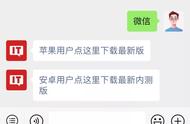北京日报客户端 | 记者 刘晓琰
过去的两个月里,中国有多场重大的主场外交活动:第三届“一带一路”国际合作高峰论坛,来自151个国家和41个国际组织的代表来华参会,注册总人数超过1万人;
北京香山论坛期间,来自90多个国家、地区和国际组织官方代表团参会,参会的国防部长级代表和军队总长级代表达到了近50位,参会代表数量和层级创历史新高;
11月召开的第六届中国国际进口博览会,迎来了154个国家、地区和国际组织的来宾,美国、洪都拉斯等国首次派出高级别官员参会。美国大豆出口协会首席执行官苏健感慨道,这是他在世界各地见过的最大的活动。
为什么会有这么多国家愿意来中国参会?国际社会希望从中国听到什么?俄乌冲突、巴以冲突、叙利亚问题、缅北激战……被多场地区冲突环绕,中国为什么能享有难得的和平?中美元首会晤及其成果向世界传递了哪些积极信号?亚太经济合作组织(APEC)会议能否为亚太迎来包容发展新机遇?
长安街知事(微信ID:Capitalnews)联合中国人民大学重阳金融研究院(*人大重阳)推出“全球治理大家谈”栏目。马来西亚国会原副议长、联邦交通部原部长暨亚太“一带一路”共策会会长翁诗杰(Ong Tee Keat)就“一带一路”倡议、全球安全和中美关系等与记者进行了分享。
翁诗杰表示,“一带一路”倡议是一项宏大的人类互联互通工程,涉及政策、基础设施、贸易、资金和人员等各个维度。在经济民族主义抬头的背景下,“一带一路”凝聚了共同发展和伙伴外交在全球治理中的智慧,是对全球化的支持。在东南亚地区,“一带一路”倡议为包括马来西亚在内的各国庞大的基础设施发展注入了活力,为缺乏项目资金和技术等几乎无解的难题提供了急需的解决方案,提升了东盟互联互通的水平和地区经济竞争力。“一带一路”倡议超越“睦邻友好”的理念,它代表的是全人类的命运休戚与共、利益交融的全球合作典范,这与孟子“达则兼济天下”的哲学思想也是一脉相承的。俗话说,“布丁的味道好不好,尝尝才知道”。各共建国家在世界范围内广泛、深入参与“一带一路”倡议,本身就是对西方各种“陷阱论”诬蔑的有力反驳。
在谈到一些西方媒体固守“意识形态”偏见,指责中国是“威胁的来源”、认为“中国改变国际体系中的权力分配,并在持续的系统性变革中掌控国际规则”时,翁诗杰表示,西方打从心里抗拒中国参与全球治理已是不争的事实。所谓“意识形态”使然,只是一个方便的借口,毕竟全球治理从来没有明文规定必须独尊一家的治理模式。所谓“自由国际秩序”充其量是二战后,西方挟其战胜国话语权的优势,按本身意愿塑造的治理模式,并不符合战后纷纷独立的新兴国家意愿。
他指出,当中国为这些国家发声,要求由西方操办垄断的全球治理体系更为包容时,这等同埋下了导火线。及至中国转为主动参与国际事务,并为全球治理提供“中国方案”时,更被视为对现有国际秩序的空前挑战。西方频频指责中方挑战 “以规则为基础的秩序”,指的正是西方以本身利益为依归所制定的秩序。在这种秩序下,其他国家毫无话语权,更不允许置疑。
就以国际安全观为例,中国提出的全球安全倡议主张冲突各方的安全关切必须全面与平等考量,而不是以一己利益为主导,正好抵触西方国家行之有年的国际安全观,即:一众国家的安全考量皆必须服膺于西方的安全关切。在此背景下,对中国及其倡议的包容性自然不见容于西方以本身利益为主导的安全架构。
刚刚闭幕的亚太经济合作组织(APEC)会议能否取得实质性成果?翁诗杰认为,这取决于是否议而决、决而行、行而果,这一切要看各与会国是否拿出诚意和决心。参考过去的例子,我们不难发现,国际会议不乏以议决案或联合公报昭示国际社会的举动,可很多时候,各国后来将之视同草芥,自我背弃承诺。
至于APEC会议能否为亚太迎来包容发展的新机遇,他认为讨论这个问题还言之过早,不容过早乐观。美方的“印太战略”预计不会轻易放弃,其麾下的“印太经济框架”(IPEF)旨将中国排除在亚太经济合作体系之外的居心昭然若揭,对区域性的经济一体化,始终是个会造成分化的隐患。
“布丁的味道好不好,尝尝才知道”
知事:今年是共建“一带一路”倡议提出十周年。共建“一带一路”倡议,是探索远亲近邻共同发展的新办法,是造福各国、惠及世界的“幸福路”。路相通,情相牵,心相近,梦相连。十年来,无数人的生活与命运,因“一带一路”而改变。我们看到您受邀参加了第三届“一带一路”国际合作高峰论坛,并且参加了智库交流专题论坛,您对本次大会有怎样的感受?您眼里的“一带一路”是一个什么样的倡议,总体印象如何?
翁诗杰:事实上,在我看来,“一带一路”倡议是一项宏大的人类互联互通工程,涉及政策、基础设施、贸易、资金和人员等各个维度。在经济民族主义抬头的背景下,“一带一路”凝聚了全球治理中共同发展和伙伴外交的智慧,对全球化体现了坚定的支持。 从全球角度视之,“一带一路”是为满足全球日益增长的基建投资需求而提出的。它不单为全人类提供了契合时宜且设想周全的公共产品,同时也让中国向世界敞开大门。最终它不仅只是加速了中国的现代化,也推进了世界的现代化。
从2013年到2022年,中国与“一带一路”国家的贸易额年均增长1.4%,突破16.6万亿美元大关,投资总额达到了3800亿美元。据世界银行发布的报告,世界银行预测“一带一路”全面实施后,“一带一路”沿线国家贸易将增长31%。 在当前的地缘政治背景下,“一带一路”倡议的启动和推进,在某种程度上也催生了美西方国家若干对标“一带一路”的基建倡议。
知事:为什么越来越多的国家和地区愿意加入“一带一路”倡议?
翁诗杰:十年来,已有152个国家参与“一带一路”倡议,约占全球国家总数的77%,这是对“一带一路”倡议秉持共商、共建、共享原则的多边合作模式投下的信任票。 在此原则的指导下,国家治理模式和政体选择从未成为加入“一带一路”的先决标准。这是“一带一路”倡议同美国领导的七国集团(G7)和欧盟所提出的基础设施建设倡议的最大不同在于,这些美西方的基建发展倡议,比如“全球基础设施与投资伙伴关系”(PGII)和“全球门户”(Global Gateway),主要由私人企业界投资驱动,具有浓厚的政治价值取向。
虽然这些倡议也承诺为基础设施需求提供资金,但是其资金规模要比“一带一路”小得多。时至今日,尽管美西方国家屡屡推出新倡议,可其项目的具体成果仍待观察。迄今,它们还是摆脱不了“干打雷不下雨”的窘境。
正如西谚所说,“布丁的味道好不好,尝过才知道”。各共建国家在世界范围内广泛、深入参与“一带一路”倡议,本身就是对西方各种“债务陷阱”阴谋论的有力反驳。这些完全没有根据的污蔑尽管已受到否定,可污蔑者出于地缘政治目的,仍是乐此不疲地一再炒作,以讹传讹。
知事:共建“一带一路”为马来西亚和东南亚带来了哪些利益和机遇?您能否和我们分享一些中国成功和高质量参与马来西亚基础设施建设的例子?
翁诗杰:我身居地处东南亚的马来西亚,“一带一路”倡议的启动,为整个区域庞大的基础设施发展项目注入了活力,因为它为偌大的融资缺口和薄弱技术根基等几乎无法克服的难题,提供了急需的解决方案,同时也提升了东盟互联互通的水平与区域经济的竞争力。
比如说,中老铁路成功地将老挝从“陆锁国”变为“陆联国”,也带动了一度停滞的泛亚铁路系统;雅万高铁不仅为印尼爪哇岛的民生福祉带来了跨越式发展,也鼓舞了东盟各国人民对高铁建设的期待。毕竟,这是整个东盟地区首个高铁项目。
与此同时,马来西亚半岛目前正在施工的东海岸铁路项目(ECRL),预计将于2027年竣工。这会是一个很好的范例,展示“一带一路”如何为平衡马来西亚半岛东西海岸之间的经济发展差距发挥作用。

2022年6月,马来西亚彭亨州文冬,东海岸铁路(ECRL)云顶隧道内的一台掘进机,这是中国支持的铁路项目的隧道阶段的开始。图源:视觉中国
知事:您认为共建“一带一路”所秉持的理念对于当今世界来说有哪些意义和价值?
翁诗杰:“一带一路”倡议的成功,在很大程度上得益于“亲、诚、惠、容”的睦邻友好”理念。它不分远近,代表的是全人类命运休戚与共、利益交融的全球合作典范,特别是在面对共同挑战的考验时刻。 从中华文化的角度来看,中国通过“一带一路”积极参与全球事务,愿意分享“一带一路”倡议带来的增长红利,体现了构建人类命运共同体的宏大理念。这与孟子的“达则兼济天下”的哲学思想是一脉相承的。
知事:未来十年,您对“一带一路”倡议的发展有哪些展望和建议?
翁诗杰:在“一带一路”倡议进入第二个十年之际,绿色低碳、可持续发展的现实意义和重要性越来越凸显出来。中国宣布的新阶段“一带一路”八项行动计划也展现了“高质量发展”的承诺。
在此背景下,打造绿色数字基建势在必行。“绿色一带一路”的建设将带来发展范式的转变。这不是一个突然的转变,而是中国在绿色发展和气候治理方面追求连贯、协调、开放的独特举措。数字互联互通将成为东盟-中国自由贸易区3.0版议程的主要内容,跨境电子商务的普及也将是大势所趋。
从数字基础设施到绿色能源、绿色交通、低碳可持续基础设施,这些新动能不断涌现并带来令人瞩目的经济增长,将成为“一带一路”新阶段的标志。 为推动共建“一带一路”高质量发展,中国坚持“能力建设”、“技术合作”,复加“小而美”的民生项目,会是广得共建国民心的亮点。
总的来说,新阶段的“一带一路”建设将植根于绿色可持续发展的基础上,同时努力推进“二轨外交”以实现民心相通。
各国都在关注中国的动向
知事:过去的两个月,中国有多场重大的主场外交活动,比如第三届“一带一路”国际合作高峰论坛,有来自151个国家和41个国际组织的代表来华参会,注册总人数超过1万人;另一个是北京香山论坛,参会代表数量和层级创历史新高;11月召开的第六届中国国际进口博览会迎来了154个国家、地区和国际组织的来宾。为什么会有这么多国家愿意来中国参会?国际社会希望从中国听到什么?
翁诗杰:中国的多场主场外交活动获得国际社会的积极响应,彰显在当前全球治理萎靡不振、疫后经济亟待提振,却备受新冷战零和思维的困扰下,各国都在关注中国的动向,以及可能为国际社会提供的新思路。
换句话来说,这些年来中国崛起所带来的新机遇和主动分享发展红利的举措,已为国际多国带来获得感。“一带一路”倡议的行稳致远,加上进博会的商机盎然,是当前复苏疫后经济的强劲动力。
其中,香山论坛日益备受关注,因为它标志着“全球南方”国家普遍要积极参与全球安全治理( security governance)的诉求。这是唤醒发展中国家建立本身安全观,不任由强国主宰的新起点。

10月31日,北京,中国外交部部长助理农融在香山论坛上演讲。图源:视觉中国
知事:近期有一张地图在中国的社交网络上很火,图上标注了欧亚大陆正在发生的危机,比如俄乌冲突、巴以冲突、叙利亚问题、伊核问题、阿富汗问题、印巴冲突、缅北激战、半岛问题,有网友戏称为“环中国冲突带”,和平似乎成为了这个世界的稀缺资源。与此同时,中国民众也很忙,“双11”购物节,许多民众都在观看直播购物。许多共建“一带一路”的国家,虽然本土正处于冲突之中,但其驻华大使馆纷纷授权网络账号进行本国商品的直播带货。中国为什么能够享有这份难得的和平?
翁诗杰:中国国内的和平稳定,彰显国家治理,契合民之所需;而摆脱极端贫穷、正视民困,则让人民看到了国家的未来。即便在严峻的外部考验下,中国始终能为14亿人口提供安居乐业的环境,也为全球治理带来新希望、新契机。
相形之下,“环中国冲突带”虽然不是一个正式的说法,但多国的战祸连绵,正折射出当前全球治理的失序无章。超级强国垄断国际秩序的领导方式,已不再符合当前多极世界的诉求。

知事:去年4月,*主席在博鳌亚洲论坛年会开幕式发表主旨演讲时,首次提出全球安全倡议。倡议坚持共同、综合、合作、可持续的安全观,倡导走出一条对话而不对抗、结伴而不结盟、共赢而非零和的新型安全之路。您认为目前全球安全面临哪些挑战?全球安全倡议对于纾解当下的全球安全困境能起到什么作用?
一些西方媒体固守“意识形态”偏见,从“中国塑造新的全球安全架构”“中国挑战自由国际秩序”等方面对全球安全倡议进行歪曲报道、过度解读甚至刻意误读。美国甚至指责中国是“威胁的来源”,认为“中国改变国际体系中的权力分配,修改全球治理的基本原则并在持续的系统性变革中掌控国际规则”。您如何看待西方的这些负面认知?
翁诗杰:西方打从心里抗拒中国参与全球治理已是不争的事实。所谓“意识形态”使然,只是一个方便的借口,毕竟全球治理从来没有明文规定必须独尊一家的治理模式。所谓“自由国际秩序”充其量是二战后,西方挟其战胜国话语权的优势,按本身意愿塑造的治理模式,并不符合战后纷纷独立的新兴国家意愿。
当中国为这些国家发声,要求目前仍由西方操办垄断的全球治理体系更为包容时,这等同埋下了导火线。及至中国转为主动参与国际事务,并为全球治理提供“中国方案”时,更被视为对现有国际秩序的空前挑战。西方频频指责中方挑战 “以规则为基础的秩序”,指的正是西方以本身利益为依归所制定的秩序。在这种秩序下,其他国家毫无话语权可言,更无质疑的空间。
就以国际安全观为例,中国提出的“全球安全倡议”,主张冲突各方的安全关切必须得到全面与平等的考量,而不是以一己利益为主导。这正好抵触西方国家行之有年的国际安全观,即:一众国家的安全考量,皆必须服膺于西方的安全关切。在此背景下,中方倡议的包容性自然不见容于西方以本身利益为主导的安全架构。
成果取决于是否议而决、决而行、行而果
知事:应美国总统拜登邀请,*主席于11月14日至17日赴美国旧金山举行中美元首会晤,同时应邀出席亚太经合组织第三十次*非正式会议。在会晤后,拜登在社交平台发布5条涉及中美会晤的推文,表示“我们取得了真正的进展。”您认为中美元首会晤及其成果向当下的世界传递了哪些积极信号?您认为此次亚太经济合作组织(APEC)会议能否取得实质性成果,能否为亚太迎来包容发展新机遇?
翁诗杰:中美元首成功会晤并初见成果,当然是事实,为全世界所乐见。但纵观拜登及其白宫团队在涉华议题上的过往表现,我个人直接的观感是:拜登急于发推文 “邀功”,说“我们取得了真正的进展”,主要志在拉升明年的总统选举选情。另一方面,美国政坛周而复始的遏华、乃至反华的政策操作,主要是顺应其本土民粹政治的炒作。这所产生的矛盾信号,中方有必要清醒对待。
然而,在全球共同关切的议题上,美国却又不能毫无作为。因此,在气候变化议题上,美国积极寻求中方的合作,这也成为了此次中美元首外交的重磅焦点之一。
综观美方此次发出的积极信号,其中包含: ※中美在气候变化和人工智能科技治理上的合作; ※美国不寻求对华发动新冷战,并无意遏制中国的现代化进程; ※美国不支持“台独”等。
然而白宫会否履约践诺,我们固然不好预判,可拜登总统此前展现的“行动赤字”( action-deficit ), 口惠而实不至,却无疑给美方的承诺投下了阴影。

当地时间11月15日,**同美国总统拜登举行中美元首会晤。图源:新华社
此次APEC会议能否取得实质性成果,取决于是否议而决、决而行、行而果,这一切要看各与会国是否拿出诚意和决心。参考过去的例子,我们不难发现,国际会议不乏以议决案或联合公报昭告国际社会的举动,可后来却往往将之视同草芥,自我背弃承诺。
至于APEC会议能否为亚太迎来包容发展的新机遇,目前还言之过早,不容过于乐观。美方的“印太战略”预计不会轻易放弃,其麾下的“印太经济框架”(IPEF)旨将中国排除在亚太经济合作体系之外的居心昭然若揭。这对区域性的经济一体化,始终是个会造成分化的隐患。
以下为本次采访的英文原文:
The Ong Tee Keat Interview 'Conflict Belt' Circles Eurasia, but China Charts Its Own Path to Peace
In the past two months, China has hosted several significant diplomatic events on its home turf:
The third Belt and Road International Cooperation Summit Forum saw representatives from 151 countries and 41 international organizations attending in China, with a total registration exceeding 10,000 people.
During the Beijing Xiangshan Forum, official delegations from over 90 countries, regions, and international organizations participated. The forum reached a historic high with nearly 50 defense minister-level and army chief-level representatives in attendance.
The sixth China International Import Expo held in November welcomed guests from 154 countries, regions, and international organizations. Notably, high-level officials from the United States, Honduras, and other countries attended for the first time. The CEO of the American Soybean Export Association expressed that it was the largest event he had ever witnessed worldwide.
Why are so many countries willing to attend events in China? What does the international community hope to hear from China? Surrounded by conflicts such as the Russia-Ukraine conflict, the Israeli-Palestinian conflict, the Syrian issue, and intense battles in northern Myanmar, how is China able to enjoy rare peace? What positive signals did the outcomes of the China-U.S. summit send to the world? Can the Asia-Pacific Economic Cooperation (APEC) meeting bring new opportunities for inclusive development in the Asia-Pacific region?
Capital News, in collaboration with RDCY, has launched the “Global Governance Talk” section. Ong Tee Keat, the president of Belt and Road Initiative Caucus for Asia Pacific (BRICAP) , former Deputy Speaker of the House of Representatives and Federal Minister of Transport of Malaysia, shared his views with us on topics such as the impact of the Belt and Road Initiative, global security governance, and China-U.S. Relations.
This year marks the 10th anniversary of the Belt and Road Initiative (BRI) I proposed. The BRI, drawing inspiration from the ancient Silk Road and focusing on enhancing connectivity, aims to enhance policy, infrastructure, trade, financial and people-to-people connectivity, inject new impetus into the global economy, create new opportunities for global development, and build a new platform for international economic cooperation.Over these 10 years, we have stayed committed to this founding mission. Thanks to our joint efforts, Belt and Road international cooperation has gotten off the ground, grown rapidly and produced fruitful outcomes.
Belt and Road cooperation has extended from the Eurasian continent to Africa and Latin America. More than 150 countries and over 30 international organizations have signed Belt and Road cooperation documents. We have held two sessions of the BRF before, and have established over 20 specialized multilateral cooperation platforms under the BRI.
When asked about Ong Tee Keat’s impression of the Belt and Road Initiative, he expressed that the Belt and Road Initiative(BRI) is a gigantic human endeavor of connectivity, focusing on dimensions of policies, infrastructure, trade, finance and people. It encapsulates the wisdom of trans-border development and partnership diplomacy in global governance. Amid the rising economic nationalism, it is a strident move in support of globalization. From the global perspective, the trillion-dollar initiative was rolled out to help meet the ever-escalating demands for infrastructure investment worldwide, rendering it a timely and thoughtful public good for the entire humanity.
To illustrate the contributions of the Belt and Road Initiative, Ong Tee Keat also provided several examples. For instance, a case in point is the oft-cited China-Laos Rail link that has successfully transformed Laos from a land-locked ASEAN member state to a presently land-linked country. The coming into fruition of the rail service has set into motion the once stalled Pan Asian Railway System that is slated to run across the Peninsular ASEAN. On the other hand, the recent inauguration of the Jakarta-Bandung High Speed Rail is another BRI milestone, bringing along quantum leap progress to the livelihood and well-being of the people in Java, Indonesia, alongside inspiring the entire populace in ASEAN. After all, it is the pilot high-speed-rail project in the region. Parallel to this, the on-going East Coast Rail Link (ECRL) project in Peninsular Malaysia, which is scheduled for completion by end of 2027, would serve as a good model illustrating how the ultimate delivery of the BRI project could re-balance the economic disparity between the better developed west coast and the east coast economic backwater as intended.
Ong Tee Keat has long been following China's Belt and Road Initiative, and he believes that the 10th anniversary of the Belt and Road Initiative (BRI) marks its coming of age amid rising geopolitical tensions. The ambitious mega endeavor weathered through its first decade of inception with vigor. The multitude of orchestrated disinformation designed to discredit it with such malicious labels as "debt trap" fails to impede the BRI momentum worldwide as the initiative snowballs into more areas, notably in the developing Global South.
He emphasized that, in reality, the BRI is a game-changer in its own right as it seeks to transform the landscape of regional, if not, global connectivity in all respects. It is a multi-dimensional model of human endeavor, dedicated to enhancing multilateral cooperation in pursuit of sustainable socio-economic development and mitigations of global challenges. The underlying principle is rooted in the aspiration of forging a shared future for humanity, more so in the face of increasing existential exigencies.The element of symbiosis inherent in the project may remain incomprehensible to the state actors and the military-industrial-media complex who are habitually obsessed with their narrow geostrategic priorities. The bumpy trajectory of BRI has to a great extent been attributable to such obsessional paranoia against China. The proverbial "burying head in the sand" attitude is now their pervasive response in toeing the "political correctness" of the day in the West.
Considering that changes of the world, of our times, and of historical significance are unfolding like never before, China is endeavoring to build itself into a stronger country and rejuvenate the Chinese nation on all fronts by pursuing Chinese modernization. The modernization we are pursuing is not for China alone, but for all developing countries through our joint efforts. Global modernization should be pursued to enhance peaceful development and mutually beneficial cooperation and bring prosperity to all. On our way forward, we will encounter both headwinds and tailwinds. We need to stay focused on our goal, take results-oriented actions, persevere, and keep moving forward until our goal is met. China will work with all parties involved to deepen Belt and Road partnerships of cooperation, usher this cooperation into a new stage of high-quality development, and make relentless efforts to achieve modernization for all countries.
At the third Belt and Road Forum for International Cooperation, China’s President Xi Jinping delivered a keynote speech including eight major steps China will take to support our joint pursuit of high-quality Belt and Road cooperation:
First, building a multidimensional Belt and Road connectivity network. China will speed up high-quality development of the China-Europe Railway Express, participate in the trans-Caspian international transportation corridor, host the China-Europe Railway Express Cooperation Forum, and make joint efforts to build a new logistics corridor across the Eurasian continent linked by direct railway and road transportation. We will vigorously integrate ports, shipping and trading services under the "Silk Road Maritime," and accelerate the building of the New International Land-Sea Trade Corridor and the Air Silk Road.
Second, supporting an open world economy. China will establish pilot zones for Silk Road e-commerce cooperation, enter into free trade agreements and investment protection treaties with more countries. We will remove all restrictions on foreign investment access in the manufacturing sector. In light of international high-standard economic and trade rules, we will further advance high-standard opening up in cross-border service trade and investment, expand market access for digital and other products, and deepen reform in areas including the state-owned enterprises, digital economy, intellectual property and government procurement. China will hold the Global Digital Trade Expo annually. In the next five years (2024-2028), China's total trade in goods and services is expected to exceed USD 32 trillion and USD 5 trillion respectively.
Third, carrying out practical cooperation. China will promote both signature projects and "small yet smart" livelihood programs. The China Development Bank and the Export-Import Bank of China will each set up a RMB 350 billion financing window. An additional RMB 80 billion will be injected into the Silk Road Fund. Together, they will support BRI projects on the basis of market and business operation. Cooperation agreements worth USD 97.2 billion have been concluded at the CEO Conference held during this Forum. China will carry out 1,000 small-scale livelihood assistance projects, and enhance vocational education cooperation through Luban Workshops and other initiatives. We will also step up joint efforts to ensure the safety of BRI projects and personnel.
Fourth, promoting green development. China will continue to deepen cooperation in areas such as green infrastructure, green energy and green transportation, and step up support for the BRI International Green Development Coalition. China will continue to hold the BRI Green Innovation Conference, and establish dialogue and exchange mechanisms for the solar industry and a network of experts on green and low-carbon development. China will implement the Green Investment Principles for the Belt and Road, and provide 100,000 training opportunities for partner countries by 2030.
Fifth, advancing scientific and technological innovation. China will continue to implement the Belt and Road Science, Technology and Innovation Cooperation Action Plan, hold the first Belt and Road Conference on Science and Technology Exchange, increase the number of joint laboratories built with other parties to 100 in the next five years, and support young scientists from other countries to work on short-term programs in China. At this Forum, China will put forward the Global Initiative for Artificial Intelligence (AI) Governance. We stand ready to increase exchanges and dialogue with other countries and jointly promote the sound, orderly and secure AI development in the world.
Sixth, supporting people-to-people exchanges. China will host the Liangzhu Forum to enhance dialogue on civilizations with BRI partner countries. In addition to the Silk Road International League of Theaters, the Silk Road International Arts Festival, the International Alliance of Museums of the Silk Road, the Silk Road International Alliance of Art Museums, and the Silk Road International Library Alliance that have been set up, China has also launched the International Tourism Alliance of Silk Road Cities. And we will continue with the Chinese government scholarship Silk Road Program.
Seventh, promoting integrity-based Belt and Road cooperation. Together with its cooperation partners, China will release the Achievements and Prospects of Belt and Road Integrity Building and the High-Level Principles on Belt and Road Integrity Building, and establish the Integrity and Compliance Evaluation System for Companies Involved in Belt and Road Cooperation.
Eighth, strengthening institutional building for international Belt and Road cooperation. China will work with its BRI partner countries to strengthen the building of multilateral cooperation platforms covering energy, taxation, finance, green development, disaster reduction, anti-corruption, think tank, media, culture and other fields.
Ong Tee Keat’s outlook on the future development of the Belt and Road Initiative aligns seamlessly with the Chinese government's vision. He emphasizes the importance of high-quality development. He pointed out that as we usher in the second decade for the BRI, its commitment to scaling higher quality development is increasingly relevant and crucial in response to the pressing need for low carbon sustainable development. In this context, green infrastructure calls for the ramping up of digital sustainable infrastructure development. Digital connectivity is all set to dominate the scene as is earmarked in the agenda for ASEAN China Free Trade Area 3.0. Pervasiveness of the cross-border e-commerce would be the order of the day.
Ong Tee Keat also put forward the vision of capacity building. In pursuit of higher quality of BRI development, China has even-handedly given assurances of "capacity building" and empowerment through technical collaboration, alongside the roll-out of more "small yet smart" livelihood assistance projects for poverty alleviation. These were clearly outlined by President Xi in his keynote address at the 3rd Belt and Road Forum recently. In other words, the new phase of BRI implementation looks set to place due emphasis on the people-to-people connectivity through Track 2 Diplomacy, in addition to strictly adhering to the green principle of sustainable development.
Besides the third Belt and Road Forum for International Cooperation, over the past two months, China has also hosted other major diplomatic events, such as the Beijing Xiangshan Forum, breaking records in terms of the number and level of participating representatives. In November, the sixth China International Import Expo welcomed guests from 154 countries, regions, and international organizations.
When asked why so many countries are willing to attend events in China and what the international community hopes to hear from China, Ong Tee Keat stated that the multitude of diplomatic activities conducted by China on various international platforms has garnered a positive response from the global community. This prominence comes at a time when global governance is struggling, economies are in need of post-pandemic revitalization, and the world is grappling with the challenges of new zero-sum thinking akin to a new Cold War. In this context, nations worldwide are closely monitoring China's actions and potential contributions to charting a new course for the international community.
In other words, China's rise in recent years, coupled with its initiatives to share the benefits of development, has created new opportunities and garnered appreciation from many countries internationally. The Belt and Road Initiative's steady progress, coupled with the business opportunities presented by the International Import Expo, serves as a vital stimulant for the global economic recovery in the post-pandemic era.
Ong Tee Keat particularly emphasized the distinctiveness of the Beijng Xiangshan Forum. He pointed out that the Beijing Xiangshan Forum is gaining increasing attention as it signifies the active participation of Southern countries in global security governance. This marks a new starting point for awakening developing countries to establish their own security perspectives, moving away from dominance by stronger nations.
The reporter of Capital News has noticed that there's been a trending map on Chinese social media lately, highlighting crises unfolding across the Eurasian continent, including the Russia-Ukraine conflict, Israeli-Palestinian tensions, the Syrian situation, the Iran nuclear issue, Afghanistan, India-Pakistan conflicts, clashes in northern Myanmar, and the Korean Peninsula issue. Some netizens jokingly refer to it as the 'Ring of Conflicts Around China,' suggesting that peace has become a scarce resource in the world. Meanwhile, China is quite busy—just finished the Belt and Road Summit, currently hosting the tenth Beijing Fragrant Hills Forum, and Chinese netizens are recovering from the Singles' Day online shopping spree. Even countries involved in conflicts and part of the Belt and Road initiative have their embassies in China authorizing online accounts to livestream and promote their local products.
When asked why is China able to maintain this rare peace amidst global turmoil, Ong Tee Keat stated that the peace and stability within China exemplify a governance that aligns with the needs of the people, simultaneously lifting the nation out of extreme poverty and addressing the challenges faced by the populace. This enables the citizens to see a promising future for the country. Even in the face of severe external challenges, China consistently provides a secure and prosperous environment for its 1.4 billion people, offering new hope and opportunities for global governance. In contrast, while not an officially recognized term, the concept of the "Conflict Belt" surrounding China reflects the continuous turmoil in many countries, underscoring the current disorder in global governance. The leadership approach of a superpower monopolizing the international order no longer aligns with the demands of today's multipolar world.
At the invitation of U.S. President Biden, China’s President Xi visited San Francisco from November 14th to 17th for the China-U.S. Summit and attended the 30th APEC Informal Leader’s Meeting. Post-meeting, President Biden shared five tweets on social media, stating, 'We've made real progress.'
When asked what positive signals the China-U.S. Summit and its outcomes send to the world, Ong Tee Keat stated that the successful meeting between the leaders of China and the United States, with initial achievements, is indeed a fact. However, looking at the fluctuating statements from Biden and his White House team on China-related issues, the immediate impression is that Biden is eager to tweet about accomplishments, claiming "we have made real progress," primarily with an eye on boosting prospects for the upcoming presidential election. On the other hand, his administration's containment and even anti-China policy actions align with the populist politics prevailing in the United States.
He also simultaneously warned China not to take it lightly. The U.S.'s "Indo-Pacific strategy" is not expected to be easily abandoned. Its "Indo-Pacific Economic Framework" (IPEF), aimed at excluding China from the Asia-Pacific economic cooperation system, is evidently designed to create divisions in regional economic integration.
Proof of The Pudding Is In The Eating
Capital News: We noticed that you were invited to attend the third Belt and Road International Cooperation Forum and also participated in the Think Tank Exchange Forum. Could you please share your impressions of this conference and the Belt and Road Initiative?
Ong Tee Keat:Actually, to my understanding, the Belt and Road Initiative(BRI) is a gigantic human endeavor of connectivity, focusing on dimensions of policies, infrastructure, trade, finance and people. It encapsulates the wisdom of trans-border development and partnership diplomacy in global governance. Amid the rising economic nationalism, it is a strident move in support of globalization.
From the global perspective, the trillion-dollar initiative was rolled out to help meet the ever-escalating demands for infrastructure investment worldwide, rendering it a timely and thoughtful public good for the entire humanity.
Amid the prevailing Sino-US geopolitical rivalry in all dimensions, the kick-off of BRI has in a way been instrumental in catalyzing the emergence of several rival initiatives sponsored by the US and its allies.
In the current geopolitical context, the initiation and advancement of the Belt and Road Initiative have, to some extent, spurred several infrastructure initiatives by certain Western countries that can be seen as imitation to the Belt and Road.
Capital News: Why are more and more countries and regions getting on board with the BRI?
Ong Tee Keat:Ten years on, 152 countries across the world, equivalent to over 78 % of the nation states, have been getting on board with the BRI. It is tantamount to a vote of confidence in the BRI's model of multilateral cooperation, underpinned by the principles of extensive consultation, joint participation and mutual sharing of benefits. In this context, model of governance and choice of polity have never been made the criteria for accession to the BRI.
In the implementation of BRI projects, China has defied all the past dictates of the West, where no trans-border infrastructure projects could ever take off without a plethora of attached conditions that serve only the core interests of the West. From this perspective, the Marshall Plan of rebuilding Western Europe by the U.S. after WWII is clearly not comparable to the BRI.
While the alternative choices offered to the world in infrastructure development are largely private-investment driven and political value-oriented as was dictated by the US-led G7 and the EU. Both the Partnership for Global Infrastructure & Investment (PGII) and the Global Gateway, with a much smaller financial scale than the BRI, promise to finance the infrastructure needs as well. As of today, despite the occasional announcements made by the US-led West, the coming into fruition of specific projects under the framework of these two initiatives remains to be seen.
Specifically, the rollout of the Build Back Better World (B3W) initiative by the U.S. and the EU Commission's Global Gateway Initiative are sufficient testaments to such an antagonistic competition. Interestingly, both initiatives target infrastructure development projects under the framework of economic partnership, thus drawing parallels to the BRI.Be that as it may, private investment-driven initiatives initiated by the West appear relatively dormant and less transparent since their respective inceptions. Ostensibly, China's BRI leaves both the B3W and Global Gateway initiatives trailing in the race quantitatively, in terms of a number of infrastructure projects delivered, as well as the quantum of fund allocation disbursed.
Despite the repeated launch of new initiatives by Western countries, the specific outcomes of their projects are still to be observed. So far, they have not been able to escape the predicament of "promising much but delivering little."
Demands for transparency in the fund trials and outcomes of project implementation as required by the West in scrutinizing the BRI projects seem to have been glaringly absent in monitoring the B3W and Global Gateway initiatives.
Nonetheless, the BRI does not resort to hair-splitting over such the practice of double standards. Neither does it seek to respond to the purported waning prominence of the BRI as was played up by the Western media. Instead, it appears more confident and ready to brace for the growing global demand for connectivity, both infrastructurally and socio-culturally.
By now, as the saying goes, proof of the pudding is in the eating. The overwhelming participation of BRI across the world is, in itself, a clear manifestation of outright rejection of the malicious labeling of BRI as "debt trap diplomacy" by the West. It is totally unfounded, albeit still deemed "recyclable" by certain quarters for geopolitical purpose.
The logic is rather simple if the assertion were to be scrutinized rationally and not viewed under the geopolitical prism, as all BRI projects are virtually host-driven. No unilateral interest dictated by China has ever come into play as could have been opined by the propagandists of the West. In this context, the U.S.-led West is apparently judging China with allegations merely based on its own experience and actions towards others.The oft-cited case of the "debt trap" in the construction of the East Coast Rail Link ( ECRL ) in Malaysia is a classic case of geopolitical hoax in point. The project once stalled after the change of government in 2018 was hyped by the Western media as a purported "pushback" against Beijing's "debt trap".
Yet, in reality, the project was hatched by the Malaysian administration long before the inception of BRI. It only came into being when the latter decided to embark on the bandwagon of BRI. It was entirely Malaysia-initiated without any external coercion, much less dictated by Beijing.
Prior to this, the viability of a Sri Lankan port in Hambantota was first called into question in 2017 with the label of "debt trap diplomacy" debuted in the theatre of geopolitical rivalry. The scenario portrayed has it that the controversial port which is deemed non-viable was shoved down the throat of the then Sri Lankan administration by Beijing under the pretext of BRI.
This was later exposed as a despicable hoax by Sri Lanka, which made its own choice to build the port in Hambantota. The pack of lies aimed at stigmatizing China was debunked by the plain fact that the port project was supported by two feasibility studies conducted by a Canadian engineering firm and then a Danish consulting firm. China only became involved and bankrolled the project after Sri Lanka failed to seek funding from the West and India.
In this regard, intriguingly, specific credible policy institutes from the West, such as the Rand Corporation and Chatham House had unambiguously distanced themselves from the prevalence
Capital News: Could you tell us about the benefits and opportunities that participating in the BRI has brought to Malaysia and Southeast Asia? Could you share some examples of successful and high-quality Chinese involvement in infrastructure projects in Malaysia?
Ong Tee Keat:In my country and my region, the inception of BRI has brought into life the mammoth infrastructure development projects in Southeast Asia, including Malaysia, as it offered the much needed solutions to the near insurmountable conundrums like the huge project finance and the lack of technology.
Over the decade, BRI has been proven as a game-changer in reshaping the landscape of logistical connectivity in ASEAN and consequently enhancing the region's economic competitiveness. A case in point is the oft-cited China-Laos Rail link that has successfully transformed Laos from a land-locked ASEAN member state to a presently land-linked country. The coming into fruition of the rail service has set into motion the once stalled Pan Asian Railway System that is slated to run across the Peninsular ASEAN.
On the other hand, the recent inauguration of the Jakarta-Bandung High Speed Rail is another BRI milestone, bringing along quantum leap progress to the livelihood and well-being of the people in Java, Indonesia, alongside inspiring the entire populace in ASEAN. After all, it is the pilot high-speed-rail project in the region.
Parallel to this, the on-going East Coast Rail Link (ECRL) project in Peninsular Malaysia, which is scheduled for completion by end of 2027, would serve as a good model illustrating how the ultimate delivery of the BRI project could re-balance the economic disparity between the better developed west coast and the east coast economic backwater as intended.
Capital News: What’s the significance and value of the shared principles behind the 'Belt and Road Initiative' in today's world?
Ong Tee Keat:The emergence of BRI owes much to the ideal that goes beyond "prosper-thy-neighbor ". It is a model of symbiotic cooperation worldwide, underpinned by the cognizance of shared destiny and intertwined interest of humanity, notably in the face of common challenges.
From the Chinese cultural perspective, to my understand, China's proactive global engagement through the BRI is a manifestation of the Chinese ideal of pursuing a global community of shared future where interests of humanity are intertwined. Also, it is consistent with the Mencius philosophical thoughts of " Aiding others when one has the means "(达则兼济天下). This explains Beijing's willingness to share the dividends of growth accrued from the BRI implementation.
Capital News: What are your expectations and suggestions for the development of the BRI in the next decade?
Ong Tee Keat:As we usher in the second decade for the BRI, its commitment to scaling higher quality development is increasingly relevant and crucial in response to the pressing need for low carbon sustainable development.
In this context, green infrastructure calls for the ramping up of digital sustainable infrastructure development. Digital connectivity is all set to dominate the scene as is earmarked in the agenda for ASEAN China Free Trade Area 3.0. Pervasiveness of the cross-border e-commerce would be the order of the day.
In pursuit of higher quality of BRI development, China has even-handedly given assurances of "capacity building" and empowerment through technical collaboration, alongside the roll-out of more " small yet smart " livelihood assistance projects for poverty alleviation. These were clearly outlined by President Xi in his keynote address at the 3rd Belt and Road Forum recently.
In other words, the new phase of BRI implementation looks set to place due emphasis on the people-to-people connectivity through Track 2 Diplomacy, in addition to strictly adhering to the green principle of sustainable development.
Capital News: You once mentioned that the ultimate goal of the 'Belt and Road Initiative' is not just the modernization of China, but the modernization of the world. Could you please explain your viewpoint in more detail?
Ong Tee Keat:In terms of modernization, we understand that all nations follow a trajectory. China is on a path of reconciliation, extending even to its relationship with ASEAN. Looking at past outcomes, it is clear that some developing countries are heavily reliant on infrastructure development projects to boost their competitiveness and achieve modernization. This is not an overstatement.
When I mention being a catalyst in an embassy, it means experiencing the pains of development and modernization. In many countries, this is a direct result of a willingness to share the dividends of progress and contribute to the appearance of inspired modernization over the past few decades. This is what I mean.
All Eyes on China
Capital News: Over the past two months, China has hosted several major diplomatic events, such as the Third Belt and Road International Cooperation Summit, which saw representatives from 151 countries and 41 international organizations attending with a total registration exceeding 10,000 people. Another event was the Beijing Xiangshan Forum, breaking records in terms of the number and level of participating representatives. In November, the sixth China International Import Expo welcomed guests from 154 countries, regions, and international organizations. Why are so many countries willing to participate in events in China? What does the international community hope to hear from China?
Ong Tee Keat:The multitude of diplomatic activities conducted by China on various international platforms has garnered a positive response from the global community. This prominence comes at a time when global governance is struggling, economies are in need of post-pandemic revitalization, and the world is grappling with the challenges of new zero-sum thinking akin to a new Cold War. In this context, nations worldwide are closely monitoring China's actions and potential contributions to charting a new course for the international community.
In other words, China's rise in recent years, coupled with its initiatives to share the benefits of development, has created new opportunities and garnered appreciation from many countries internationally. The Belt and Road Initiative's steady progress, coupled with the business opportunities presented by the International Import Expo, serves as a vital stimulant for the global economic recovery in the post-pandemic era.
The Xiangshan Forum is gaining increasing attention as it signifies the active participation of Southern countries in global security governance. This marks a new starting point for awakening developing countries to establish their own security perspectives, moving away from dominance by stronger nations.
Capital News: There's been a trending map on Chinese social media lately, highlighting crises unfolding across the Eurasian continent, including the Russia-Ukraine conflict, Israeli-Palestinian tensions, the Syrian situation, the Iran nuclear issue, Afghanistan, India-Pakistan conflicts, clashes in northern Myanmar, and the Korean Peninsula issue. Some netizens jokingly refer to it as the 'Ring of Conflicts Around China,' suggesting that peace has become a scarce resource in the world. Meanwhile, China is quite busy—just finished the Belt and Road Summit, currently hosting the tenth Beijing Fragrant Hills Forum, and Chinese netizens are recovering from the Singles' Day online shopping spree. Even countries involved in conflicts and part of the Belt and Road initiative have their embassies in China authorizing online accounts to livestream and promote their local products. Why is China able to maintain this rare peace amidst global turmoil?
Ong Tee Keat:The peace and stability within China exemplify a governance that aligns with the needs of the people, simultaneously lifting the nation out of extreme poverty and addressing the challenges faced by the populace. This enables the citizens to see a promising future for the country. Even in the face of severe external challenges, China consistently provides a secure and prosperous environment for its 1.4 billion people, offering new hope and opportunities for global governance.
In contrast, the continuous conflicts in the so-called "China conflict zone" among multiple countries reflect the current disorder and lack of coherence in global governance. The leadership style of dominant superpowers monopolizing international order no longer conforms to the demands of the current multipolar world.
Capital News: In his keynote address at the Boao Forum for Asia Annual Conference in April last year, President Xi Jinping introduced the Global Security Initiative for the first time. The initiative advocates for a common, comprehensive, cooperative, and sustainable security approach, promoting a new path of security that emphasizes dialogue over confrontation, partnership over alliances, and win-win outcomes instead of zero-sum games. What, in your opinion, are the current challenges facing global security? How can the Global Security Initiative contribute to alleviating the current global security predicament?
Despite these efforts, some Western media outlets adhere to ideological biases, distorting reports on the Global Security Initiative with narratives like 'China shaping a new global security framework' or 'China challenging the free international order.' They often provide excessive interpretations or deliberately misinterpret the initiative. The U.S. has even accused China of being a 'source of threat,' asserting that 'China is altering the distribution of power in the international system, changing the fundamental principles of global governance, and controlling international rules in an ongoing, systematic transformation.' Why do you think there is such a negative perception in the West regarding the Global Security Initiative?
Ong Tee Keat:The resistance of the United States and the Western world against China's involvement in global governance is an undeniable fact. The so-called "ideological differences" serve as a convenient excuse, but it is evident that global governance has never explicitly dictated the exclusive adoption of a particular governance model. The notion of the "liberal international order" is, at best, a governance model shaped by the United States and the West after World War II, leveraging their victorious narrative, and does not align with the aspirations of newly independent nations that emerged in the post-war period. When China advocates for a more inclusive global governance, challenging the monopoly held by the United States and the West, it essentially ignites a spark.
As China actively engages in international affairs and presents its solutions for global governance, it is perceived as an unprecedented challenge to the existing international order. The frequent accusations from the West, particularly the United States, claiming that China challenges the "rules-based order," specifically refer to the order formulated by the West based on their own interests, with no room for questioning or input from other nations.
Taking the example of the international security perspective, China's Global Security Initiative argues that security concerns of all parties involved in a conflict must be considered comprehensively and equally, rather than being dominated by one's own interests. This contradicts the long-standing international security perspective of the United States and the West, which dictates that the security considerations of all nations must conform to the security concerns of the United States and the West.
In this context, the inclusiveness of China's global security initiative naturally clashes with the security framework led by the United States and the West, driven by their own interests.
Outcomes Hinge on Deliberation, Decision, Action, and Results
Capital News: At the invitation of U.S. President Biden, President Xi Jinping visited San Francisco from November 14th to 17th for the China-U.S. Summit and attended the 30th APEC Informal Leaders' Meeting. Post-meeting, President Biden shared five tweets on social media, stating, 'We've made real progress.' What positive signals do you think the China-U.S. Summit and its outcomes send to the world? Do you believe the APEC meeting can achieve substantial results and usher in new opportunities for inclusive development in the Asia-Pacific region?
Ong Tee Keat:The successful meeting between the leaders of China and the United States, with initial achievements, is indeed a fact. However, looking at the fluctuating statements from Biden and his White House team on China-related issues, the immediate impression is that Biden is eager to tweet about accomplishments, claiming "we have made real progress," primarily with an eye on boosting prospects for the upcoming presidential election. On the other hand, his administration's containment and even anti-China policy actions align with the populist politics prevailing in the United States.
Nevertheless, the United States cannot remain inactive on issues of common concern in global governance. Therefore, seeking cooperation with China on the topic of climate change became a focal point in this diplomatic engagement between the leaders of China and the United States.
Examining the positive signals sent out, including:
* Cooperation between China and the United States on climate change and the governance of artificial intelligence technology.
* The U.S. not seeking to launch a Cold War against China and having no intention to curb China's modernization process.
* The U.S. opposing Taiwan independence, among other points.
Whether the APEC meeting can achieve substantial results depends on whether there is meaningful discussion, decisive action, and concrete outcomes. All of this hinges on the sincerity and determination demonstrated by the participating countries. Referring to past examples, it is not uncommon for international conferences to pass resolutions or issue joint communiqués that may initially seem promising but are ultimately disregarded, leading to self-abandonment of commitments.
As for whether the APEC meeting can bring about new opportunities for inclusive development in the Asia-Pacific region, it is premature to be overly optimistic. The U.S.'s "Indo-Pacific strategy" is not expected to be easily abandoned. Its "Indo-Pacific Economic Framework" (IPEF), aimed at excluding China from the Asia-Pacific economic cooperation system, is evidently designed to create divisions in regional economic integration.
,














